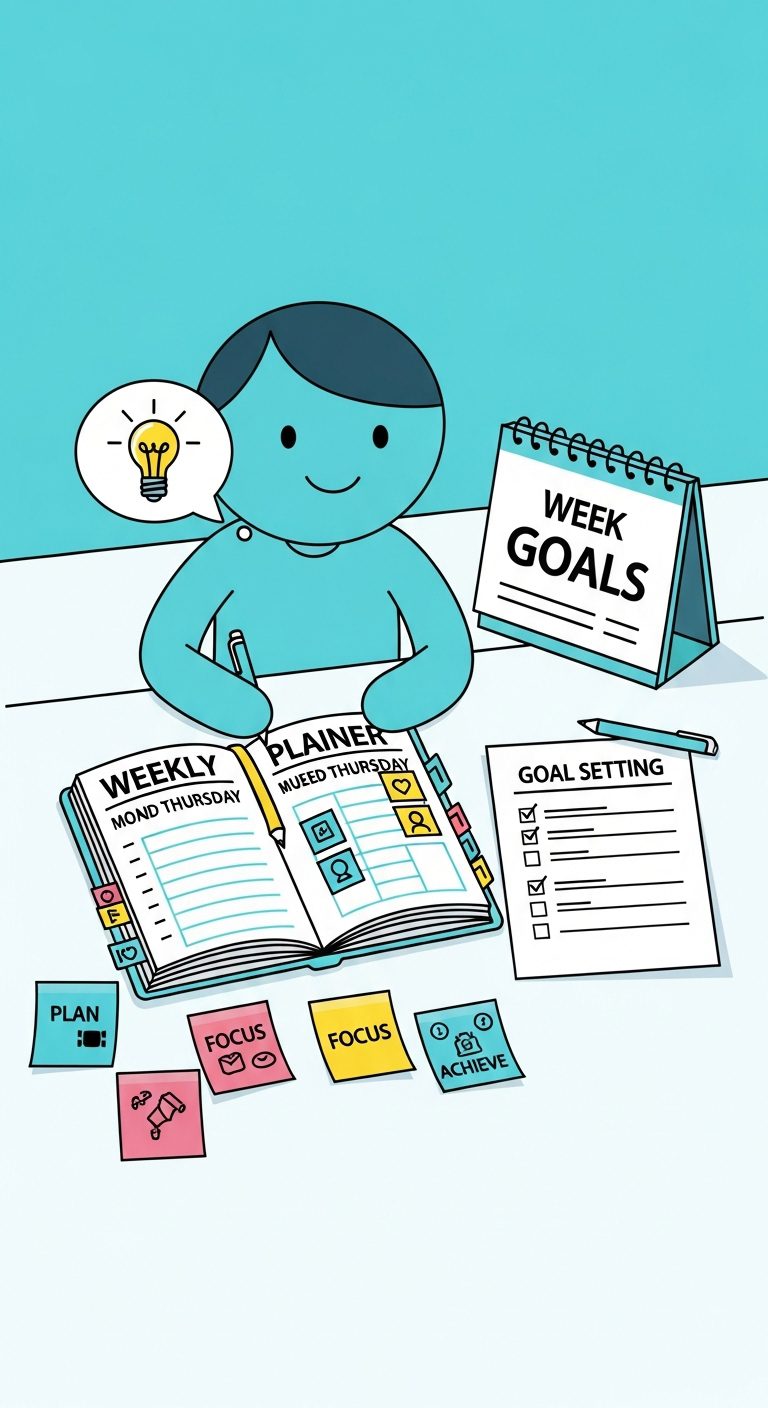Most people set big dreams at the beginning of the year but quickly feel overwhelmed. That’s where weekly goals come in. Instead of trying to tackle everything at once, breaking your ambitions into weekly chunks makes progress feel achievable, focused, and motivating. Weekly goals keep you accountable without the pressure of long-term deadlines that often lead to procrastination.
This guide will walk you through simple steps to set weekly goals effectively and stick to them.
Why Weekly Goals Work Better Than Long-Term Plans
A year-long goal often feels too distant. But a week? That feels manageable. Weekly goals help you:
- Stay focused on what really matters.
- Adjust quickly if something doesn’t work.
- Celebrate small wins, which keeps motivation high.
- Build momentum through consistent progress.
Think of it as creating stepping stones toward your bigger vision.
Step 1: Start With a Clear Vision
Before setting weekly goals, it’s important to know what you’re working toward. Maybe it’s improving fitness, learning a new skill, or building a side project. Write down your bigger objective and then break it into smaller steps. Weekly goals become the milestones that keep you moving in the right direction.
Step 2: Limit Your Goals to Three
One common mistake is overloading the week with too many tasks. Productivity experts recommend setting no more than three main goals per week. This keeps your focus sharp and prevents burnout.
For example:
- Complete three workouts.
- Finish one chapter of a book.
- Draft two blog posts.
That’s enough to feel accomplished but not so much that you’re spread too thin.
Step 3: Use a Goal-Setting Worksheet
A goal-setting worksheet makes your intentions tangible. Writing down your goals (instead of keeping them in your head) helps you commit and gives you a roadmap to follow.
Your worksheet might include:
- Weekly goals: The big three priorities.
- Action steps: Small tasks needed to complete each goal.
- Deadline: When you want it done by.
- Reflection space: A section to review progress at the end of the week.
Even a simple notebook works, but having a structured worksheet ensures you stay consistent.
Step 4: Try the 12-Week Method
The 12-week system is a popular way to keep momentum going. Instead of thinking in terms of an entire year, you divide your year into four 12-week “sprints.” Each week builds on the last, giving you short-term urgency with long-term vision.
For example:
- Week 1–3: Build foundational habits.
- Week 4–6: Increase intensity or expand scope.
- Week 7–9: Push past challenges and refine.
- Week 10–12: Review, reflect, and celebrate progress.
This method ensures you’re not only setting weekly goals but also moving forward in cycles that are easier to sustain.
Step 5: Review and Adjust Every Week
At the end of the week, take 10–15 minutes to reflect:
- What did you accomplish?
- Where did you struggle?
- What will you change next week?
This reflection step transforms weekly goal-setting from a to-do list into a self-improvement system. Over time, you’ll notice patterns in your productivity and learn how to optimize your schedule.
Step 6: Celebrate Small Wins
Progress is progress, no matter how small. Celebrating even tiny wins helps you stay motivated and reinforces the habit of sticking to your goals. This could be as simple as crossing off items on your worksheet, rewarding yourself with a small treat, or just pausing to acknowledge how far you’ve come.
Final Thoughts
Setting weekly goals is more than just writing a list it’s a system for staying consistent, motivated, and aligned with your bigger dreams. By keeping your goals manageable, using tools like a goal-setting worksheet, and adopting the 12-week method, you’ll find it easier to stay on track and actually see progress.
Remember: the goal isn’t perfection it’s steady, intentional improvement. One week at a time, those small steps add up to big change.

